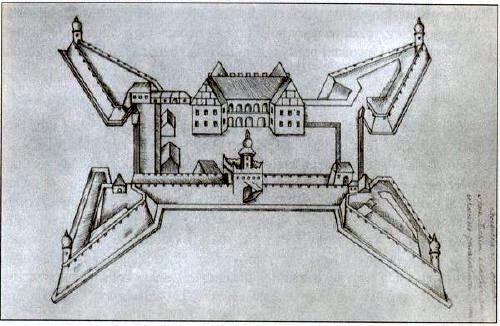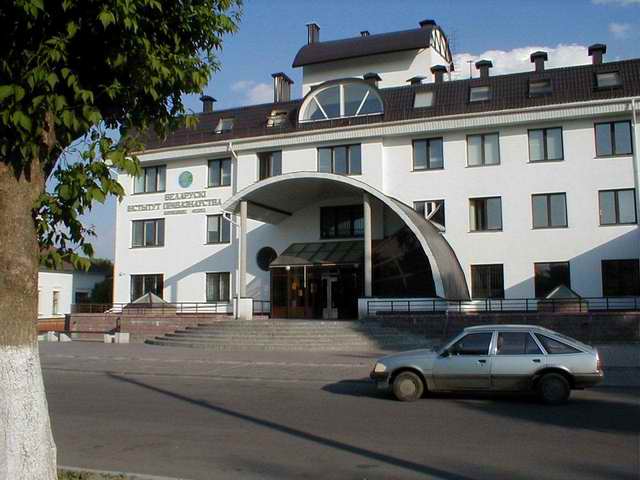|
Pripyat Swamps (punitive Operation)
The Pripyat Marshes massacres () were a series of mass murders carried out by the military forces of Nazi Germany against Jewish civilians in Belarus and Ukraine, during July–August 1941. SS leader Heinrich Himmler ordered these operations, which were carried out by units of the Wehrmacht (the regular armed forces) and the Waffen-SS. These units were ordered to kill as many Jews as possible, in a region in and around the Pripyat Marshes, comprising nine raions of the Byelorussian SSR and three raions of the Ukrainian SSR. These massacres are considered to be the first planned mass murders of civilians carried out by Nazi Germany. At least 13,788 people were killed in phase one and 3,500 Jewish men and boys were killed in phase two. The principal means of execution employed was mass shootings, after the local populace had been rounded up. Other methods were also tried, including driving people into the swamps and drowning them, though this was largely ineffective owing to their s ... [...More Info...] [...Related Items...] OR: [Wikipedia] [Google] [Baidu] |
Pripet Marshes
__NOTOC__ The Pripet Marshes or Pripyat Marshes (), also known as Pinsk Marshes (), the Polesie Marshes, and the Rokitno Marshes, are a vast natural region of wetlands in Polesia, along the forested basin of the Pripyat River and its tributaries from Brest to the west, Mogilev in the northeast, and Kyiv to the southeast. Most of the region is in Belarus, and part is in Ukraine. The Pripet Marshes are the largest wetland area in Europe. Overview The Pripet Marshes mostly lie within the Polesian Lowland, hence Polesie Marshes (Woodland Marshes), and occupy most of the southern part of Belarus and the north-west of Ukraine. They cover roughly surrounding the sandy lowlands of the dense network of rivers and rivulets forming on both sides of the Pripyat River, one of the main tributaries of the Dnieper.Pripet Marshes |
Reichsführer-SS
(, ) was a special title and rank that existed between the years of 1925 and 1945 for the commander of the (SS). ''Reichsführer-SS'' was a title from 1925 to 1933, and from 1934 to 1945 it was the highest Uniforms and insignia of the Schutzstaffel, rank of the SS. The longest-serving and most noteworthy office holder was Heinrich Himmler. Definition was both a title and a rank. The title of was first created in 1926 by the second commander of the SS, Joseph Berchtold. Julius Schreck, founder of the SS and Berchtold's predecessor, never referred to himself as . Yet, the title was retroactively applied to him in later years. In 1929, Heinrich Himmler became and referred to himself by his title instead of his regular SS rank of . This set the precedent for the commander of the SS to be called . Prior to the Night of the Long Knives, the SS was an elite corps of the (SA or storm troopers), and the was subordinate to the SA's operating head, the . On 20 July 1934, as part ... [...More Info...] [...Related Items...] OR: [Wikipedia] [Google] [Baidu] |
Ivatsevichy
Ivatsevichy (; ; ) is a town in Brest Region, Belarus. It serves as the administrative center of Ivatsevichy District. As of 2025, it has a population of 22,264. History Within the Grand Duchy of Lithuania, Ivatsevitshy was part of Nowogródek Voivodeship. In 1795, the town was acquired by the Russian Empire in the course of the Third Partition of Poland From 1921 until 1939, Ivatsevichy (''Iwacewicze'') was a provincial town in the Second Polish Republic, the seat of Kosów county with a population of around 1,500. It belonged to Polesie Voivodeship region of eastern Kresy, with a notable Jewish population. During World War II, Ivatsevichy was occupied by the Red Army and, on 14 November 1939, incorporated into the Byelorussian SSR. The number of Jews in Ivatsevichy greatly increased due to influx of refugees from the Nazi-occupied western part of Poland. Ivatsevichy was occupied by Nazi Germany from 24 June 1941 until 12 July 1944 and administered as a part of the ''Gen ... [...More Info...] [...Related Items...] OR: [Wikipedia] [Google] [Baidu] |
Hantsavichy
Hantsavichy or Gantsevichi (, ; , ; ) is a town in Brest Region, Belarus. It serves as the administrative center of Hantsavichy District. As of 2025, it has a population of 13,248. The Hantsavichy Radar Station is a part of the Russian early warning radar system. Etymology According to Belarusian toponymist Vadzim Žučkievič name "Hantsavichy" comes from surname Hantsavich. History In the interwar period, Hancewicze, as it was called in Polish, was administratively located in the Łuniniec County in the Polesie Voivodeship of Poland. Before World War II, 60% of the population was Jewish. In the 1920s and 1930s there were four synagogues, a Jewish library, an orphanage, a Tarbut school and school in Yiddish. World War II Following the invasion of Poland in September 1939, it was first Occupation of Poland (1939–1945), occupied by the Soviet Union and annexed to the Byelorussian Soviet Socialist Republic. From June 29, 1941 to July 7, 1944, it was under German occupation ... [...More Info...] [...Related Items...] OR: [Wikipedia] [Google] [Baidu] |
Lyakhavichy
Lyakhavichy or Lyakhovichi is a town in Brest Region, Belarus. It serves as the administrative center of Lyakhavichy District. As of 2025, it has a population of 10,537. History Known since the 15th century in the Grand Duchy of Lithuania as the center of the volost of the same name. At the beginning of the 16th century, it belonged to Albertas Goštautas. After the death of his son Stanislav in 1542 the town passed to the widow of the latter, Barbara Radziwiłł, who in 1547 married the heir to the Polish throne, bringing to him the numerous possessions of the Goštautas family. On April 10, 1572, Sigismund II Augustus transferred the town to the castellan of Vilna, Jan Hieronimowicz Chodkiewicz. His son, the Grand Hetman of Lithuania Jan Karol Chodkiewicz, built there in place of a small wooden castle a new stone castle of bastion type according to the most modern European models of that time. The castle was repeatedly unsuccessfully besieged by Ukrainian Cossacks and insur ... [...More Info...] [...Related Items...] OR: [Wikipedia] [Google] [Baidu] |
Pripyat River
The Pripyat or Prypiat is a river in Eastern Europe. The river, which is approximately long, flows east through Ukraine, Belarus, and into Ukraine again, before draining into the Dnieper at Kyiv Reservoir. Name etymology Max Vasmer notes in his etymological dictionary that the historical name of the river mentioned in the earliest East Slavic document, the '' Primary Chronicle'', is ''Pripet (), and cites the opinion of other linguists that the name meant "tributary", comparing with Greek and Latin roots. He also rejects some opinions which were improperly based on the stem ''-pjat'', rather than original . The name may also derive from the local word ''pripech'' used for a river with sandy banks. Geography The Pripyat begins in the Volhynian Upland, between the villages of and in Volyn Oblast, Ukraine. 204 km downstream, it crosses the border of Belarus, where it travels 500 km through Polesia, Europe's largest wilderness, within which lie the vast sandy wetl ... [...More Info...] [...Related Items...] OR: [Wikipedia] [Google] [Baidu] |
Kurt Knoblauch
Kurt Knoblauch (December 10, 1885 – November 10, 1952) was a German army officer and Waffen-SS general. Biography Knoblauch was a son of the tax collector Friedrich Knoblauch (? - September 25, 1922) and his wife Emma, née Schröder. After graduating from high school in Ratzeburg, on February 23, 1905 Knoblauch joined the Prussian Army as a cadet in the 39th (Lower Rhenish) Fusiliers, 39th (Lower Rhenish) Fusilier Regiment. On August 18, 1906 he was promoted to lieutenant. On October 18, 1909, he was transferred to the 70th (8th Rhenish) Infantry, 70th (8th Rhenish) Infantry Regiment and served as platoon commander. In May 1911 he was Secondment, seconded to the 8th (1st Rhenish) Engineer Battalion for a month to gain engineering experience in the field. On October 1, 1912, Knoblauch became battalion adjutant and on February 17, 1914 he was promoted to first lieutenant. On May 1, 1914, he was transferred to the Saarbrücken district command. During World War I, starting on Augu ... [...More Info...] [...Related Items...] OR: [Wikipedia] [Google] [Baidu] |
Hermann Fegelein
Hans Otto Georg Hermann Fegelein (30 October 1906 – 28 April 1945) was a high-ranking commander in the ''Waffen-SS'' of Nazi Germany. He was a member of Adolf Hitler's entourage and brother-in-law to Eva Braun through his marriage to her sister Gretl. Fegelein joined a cavalry regiment of the ''Reichswehr'' in 1925 and transferred to the SS on 10 April 1933. He became a leader of an SS equestrian group, and was in charge of preparation for the equestrian events of the Berlin Olympic Games in 1936. He tried out for the Olympic equestrian team himself but was eliminated in the qualifying rounds. In September 1939, after the invasion of Poland, Fegelein commanded the SS '' Totenkopf Reiterstandarte'' (Death's-Head Horse Regiment). They were garrisoned in Warsaw until December. In May and June 1940, he participated in the Battle of Belgium and France as a member of the ''SS- Verfügungstruppe'' (later renamed the ''Waffen-SS''). For his service in these campaigns, he wa ... [...More Info...] [...Related Items...] OR: [Wikipedia] [Google] [Baidu] |
Baranavichy
Baranavichy or Baranovichi is a city in the Brest Region of western Belarus. It serves as the administrative center of Baranavichy District, though it is administratively separated from the district. As of 2025, it has a population of 170,817. It is home to an important railway junction and to Baranavichy State University. General information The city of Baranavichy is located on the Baranavichy Plain in the interfluve of Shchara and its tributary Myshanka. Baranavichy is located virtually on a straight line, connecting the regional center Brest (206 km) and Minsk (149 km). Nearby cities include Lyakhavichy (17 km), Slonim (42 km), Nyasvizh (51 km), Navahrudak (52 km), and Hantsavichy (72 km). Baranavichy is located on flat terrain where the height difference does not exceed 20 m (from 180 to 200 m above sea level). The altitude of the city is 193 m above sea level. The total length of the city is 10 km from west to east and 7 km from south to north. The city is somew ... [...More Info...] [...Related Items...] OR: [Wikipedia] [Google] [Baidu] |
1st SS Cavalry Regiment
First most commonly refers to: * First, the ordinal form of the number 1 First or 1st may also refer to: Acronyms * Faint Images of the Radio Sky at Twenty-Centimeters, an astronomical survey carried out by the Very Large Array * Far Infrared and Sub-millimetre Telescope, of the Herschel Space Observatory * For Inspiration and Recognition of Science and Technology, an international youth organization * Forum of Incident Response and Security Teams, a global forum Arts and entertainment Albums * ''1st'' (album), by Streets, 1983 * ''1ST'' (SixTones album), 2021 * ''First'' (David Gates album), 1973 * ''First'', by Denise Ho, 2001 * ''First'' (O'Bryan album), 2007 * ''First'' (Raymond Lam album), 2011 Extended plays * ''1st'', by The Rasmus, 1995 * ''First'' (Baroness EP), 2004 * ''First'' (Ferlyn G EP), 2015 Songs * "First" (Lindsay Lohan song), 2005 * "First" (Cold War Kids song), 2014 * "First", by Lauren Daigle from the album '' How Can It Be'', 2015 * "First", by ... [...More Info...] [...Related Items...] OR: [Wikipedia] [Google] [Baidu] |


